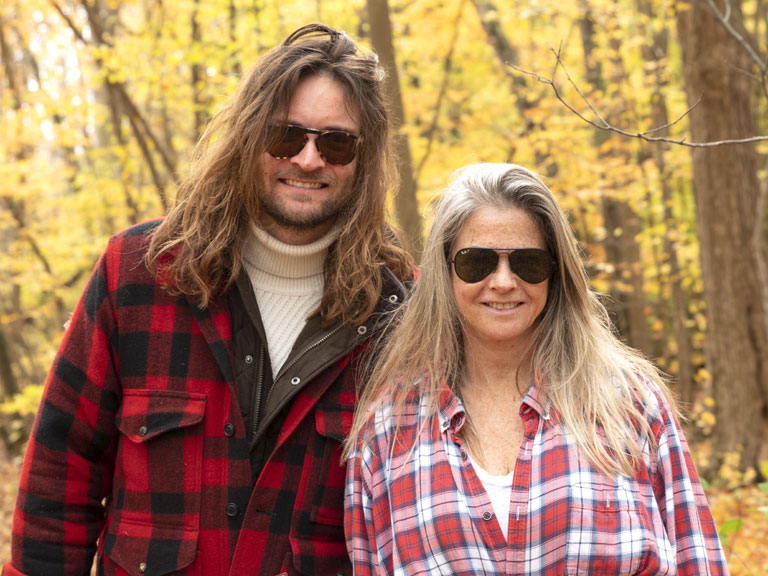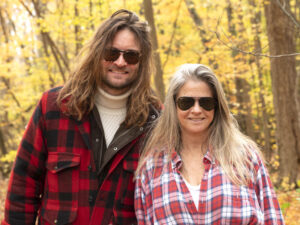County News
IRTH Hotel

Boutique hotel and spa planned in North Marysburgh
The swath of land upon which Lost Lake is situated contains a handful of different topographies. First, there is the limestone escarpment that is the enduring backbone of the land, rising 30 metres or more above the open meadow making up the second topography. Add to this a wetland area, the lake itself and a few dozen acres of hardwood forest, and this parcel of land seems to be a microcosm of the County itself. It is this varied and precious ecosystem that is behind the ethos of IRTH Hotel and Spa, a proposed development adjacent to Cape Vineyards and close to Fifth Town Cheese in the eastern part of the County. “This project is beyond a hotel and spa,” says IRTH co-founder Melanie Hazell. “This is a portal to raising people’s level of wellness, raising people’s connection to nature, through education and experience. We’re going to offer our guests a very needed opportunity to commune with nature in a beautiful setting that has been thoughtfully designed to facilitate that natural connection.”

(L-R): Alex Daprato and Melanie Hazell are two of the co-founders of IRTH and are seen here in the hardwood forest on the property.
The development will consist of a 12-room hotel that will also house a restaurant, a communal area and the check-in for the spa, as well as 12 individual cabins strategically located in each of the different topographies. There will be a number of cabins built on the escarpment, some in the meadow area and two adjacent to the wetland areas. Alex Daprato, another cofounder and Melanie’s son, stresses that the cabins will have a very light environmental impact. They are designed to blend in and take full advantage of their location. Some will be on a raised foundation, to allow growth to continue on the ground underneath and all will have a green roof. “They are passive-house designed that are all going to be off-grid, working off grey water systems for shower and hand-washing stations, and we’ll have tanks for drinking water,” says Daprato. “There won’t be any septic tanks for the cabins, because we’ll have compost toilets. They are really off-grid and light touch. We’re really trying to make these net-positive in terms of energy footprint.” The cabins, at about 400 square feet, are designed for couples, and will have a floor to ceiling glass wall to enhance the feeling of being at one with the environment. The air of seclusion will be maintained by nestling the cabins within a circular earthen mound, which will also help to visually preserve the landscape.
Landscape preservation and restoration is central to this project. The hotel itself will be built in an area fairly near the road that already shows significant signs of human intervention, in order to conserve the more natural areas. Meadows that have lain fallow for years and are now overrun by invasive species, such as wild parsnip and dog-strangling vine will be remediated, a process that is already underway. One meadow will be planted with native grasses and wildflowers, and there are plans to plant about 10,000 trees over the next few years. The marsh area will be allowed to regenerate naturally, with the help of a resident beaver colony, although the water level will be controlled through a silent drainage system. The outdoor spa area, which is arranged as a walking circuit in the forest adjacent to the hotel and comprises hot pools, relax spaces, sauna and treatment rooms, will be constructed using natural materials, and is designed to blend in to the natural landscape. One of the features is a freshwater pool where the water is cleaned and filtered through a living pond. The signature offering of the facility will be guided forest therapy walks, led by Hazell. She says that forest therapy is not simply walking into the woods and having somebody explore their deep, dark secrets. “Nature is the therapist, so it’s guiding people in nature so that nature can help focus.”
The project is now currently in the rezoning process, and after an initial public consulting process a few months ago has been scaled back from an expected maximum occupancy of about 100 per day, to about 48 per day. This has meant the size of the parking lot is now reduced, as is the size of the septic bed, further lessening the built footprint on the land. Daprato estimates that the built area will encompass much less than one per cent of the total land area. A planning decision is expected by the end of this year, or early in 2021. Construction is slated for 2022, with an opening in the summer of 2023.IRTH expects that 20 to 30 fulltime jobs will be created, and this will contribute to experiential tourism in the County. “We will offer a minimum two-night stay, breakfast and communal dinner included, guided forest therapy walks, curated experiences, including yoga, nature-based workshops and foraging, and full access to the spa. Our ideal guest is multigenerational and is attracted to regenerative tourist attractions which offer transformative experiences, education, immersion in the local environment and the prospect of continuing to the betterment of that environment,” writes Hazell and Daprato. The local community has not been forgotten. IRTH has reached out to individuals and small businesses to establish partnerships to complement their programming, and the spa facilities and forest therapy walks will also be accessible if occupancy numbers permit. For more information about IRTH, please visit irthlandscapehotel.com.

Tag the “Shame” response. Tag the ” Environmental Vandalism” response. You printed them. Share them on line. The “local community” has not been forgotten. Nor has it been represented.
How unfortunate that the WT didnt research this project to provide balanced reporting but instead promoted the sole view of the developer. Check out pecsohl.ca
This project has been opposed by a significant number of County and community residents since its introduction in Nov. 2018. It is proposed within an area of unique environmental significance recognized at both the municipal and provincial levels. It does not conform to the existing Official Plan which denotes areas for such development. It does not conform to the proposed new Official Plan which recognizes its natural core significance as important to the County and worth preserving. The proponents’ vision is to remake the natural areas into the ‘nature’ that represents their sanitized version of what would attract paying guests, forever removing this protected wetland and escarpment from County heritage. How sad to see the Wellington Times willingly promote this profiteering at the expense of the County’s natural heritage and the loss of important, untouched natural areas that should instead be valued for their undeveloped state.
Sounds wonderful (paid advert?), except when you look at what their application for Official Plan amendment and “Special Tourist/Commercial” zoning would enable:
– irreversible ecological impacts would result from proposal to build a bunch of high-priced luxe cabins right within the forested escarpment corridor, right at the top edge of the escarpment, whereas current zoning bylaw requires 30-metre setback (that’s why they are seeking “Special” zoning)
– irreversible ecological impacts would result from intrusion into Provincially Significant Area of Natural and Scientific Interest, being the “Lost Lake Basin and Escarpment Forests” ANSI; including boardwalk right into the wetland; and from hotel building, cabins, “forest spa” buildings, etc., on immediately adjacent land
– highly questionable as to whether there is adequate water/sewage disposal servicing capacity on the property: limited groundwater from the limestone; and they are showing a 2.3 acre raised septic bed — any guarantees this won’t pollute groundwater on neighbouring properties?
The property is smack-dab in the middle of what is shown in the County’s draft Official Plan as the Cape Vessey Natural Core Area (NCA). If approved, the draft OP would not allow for this type of major commercial development in the NCA. For good reason. If you were to look on the map and try to choose the absolutely worst location for high-traffic commercial hotel development in the County, you might end up here.